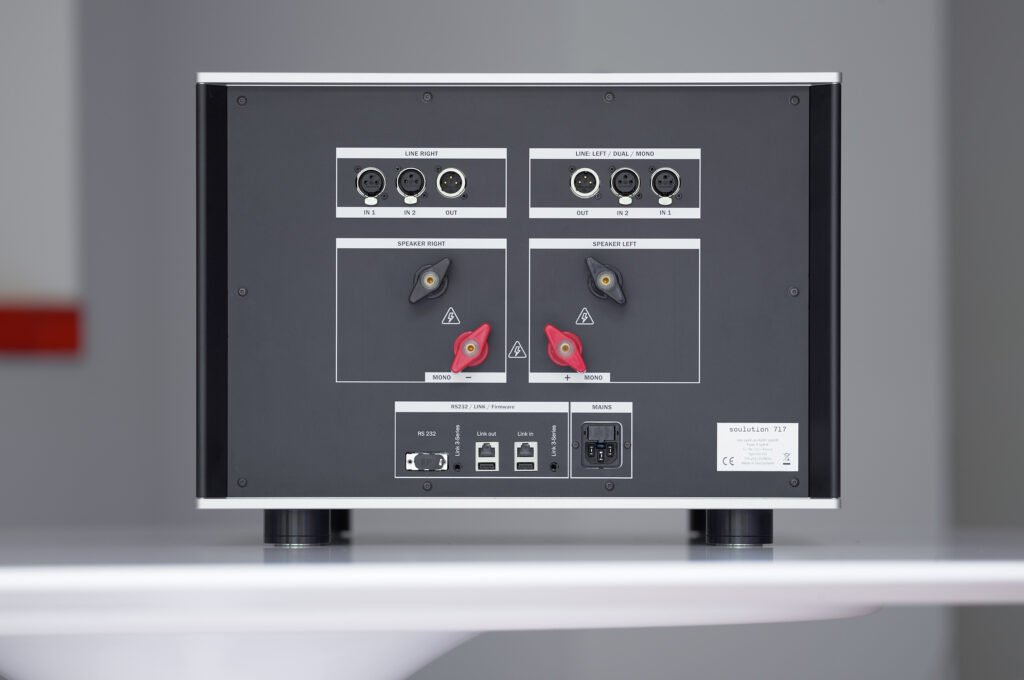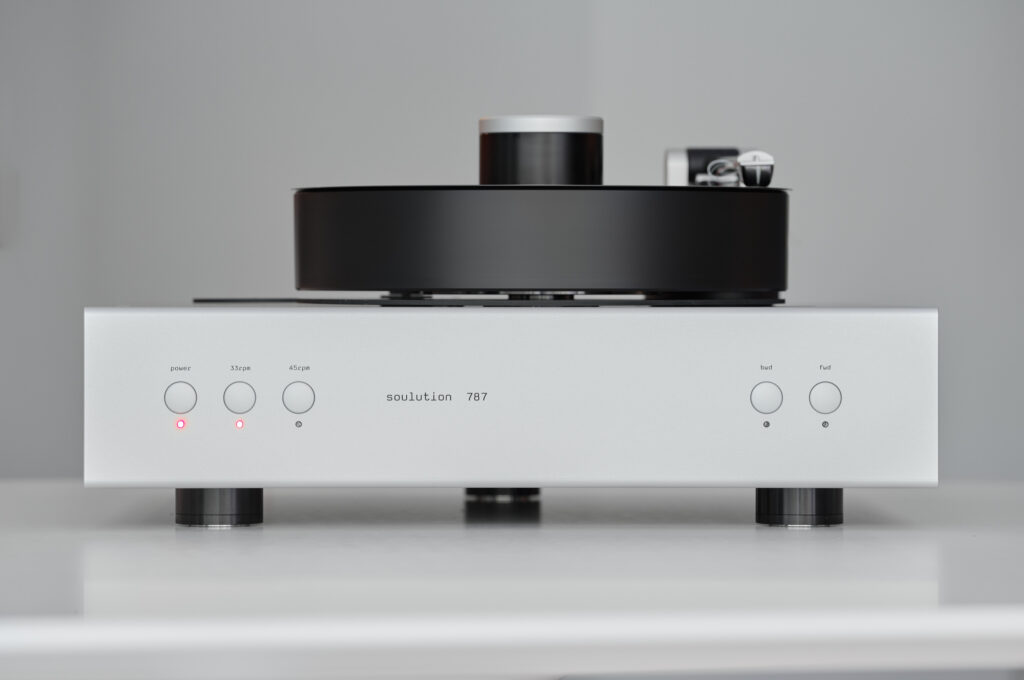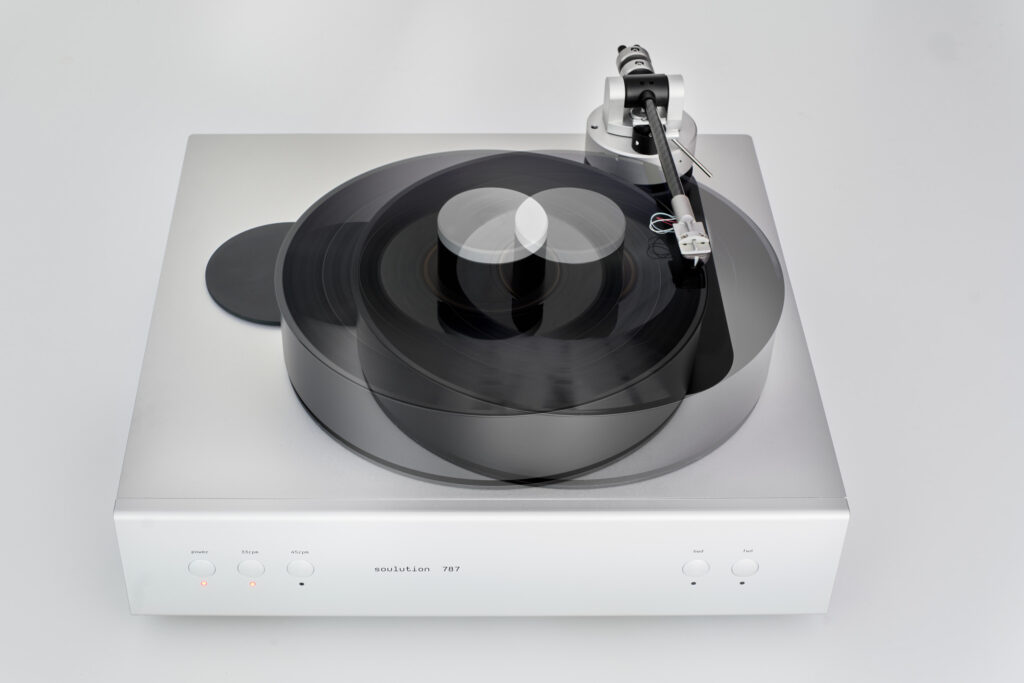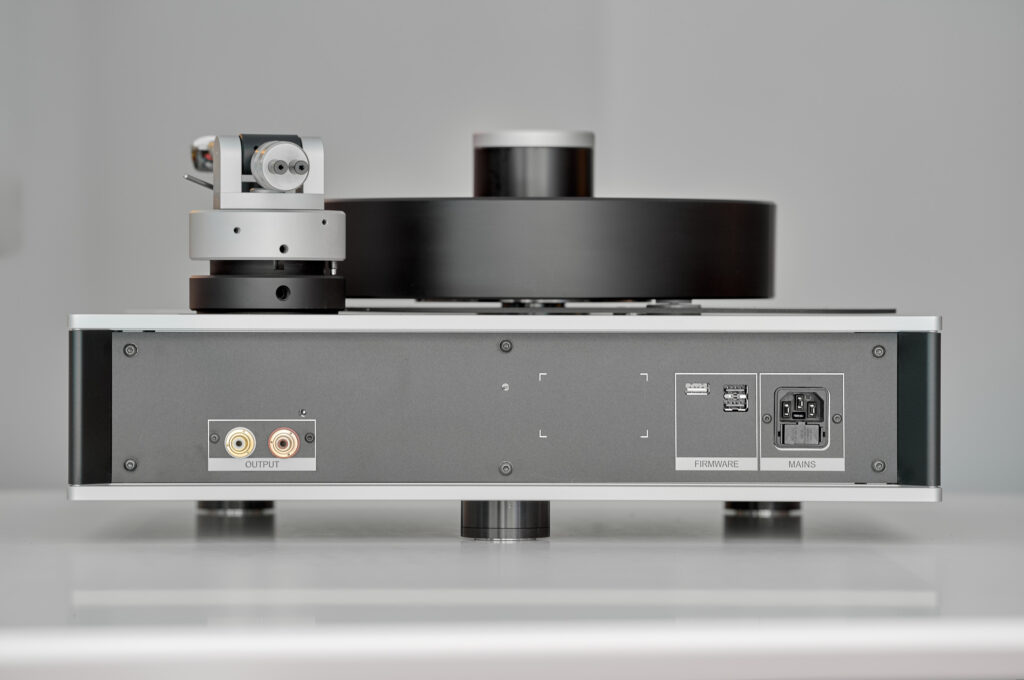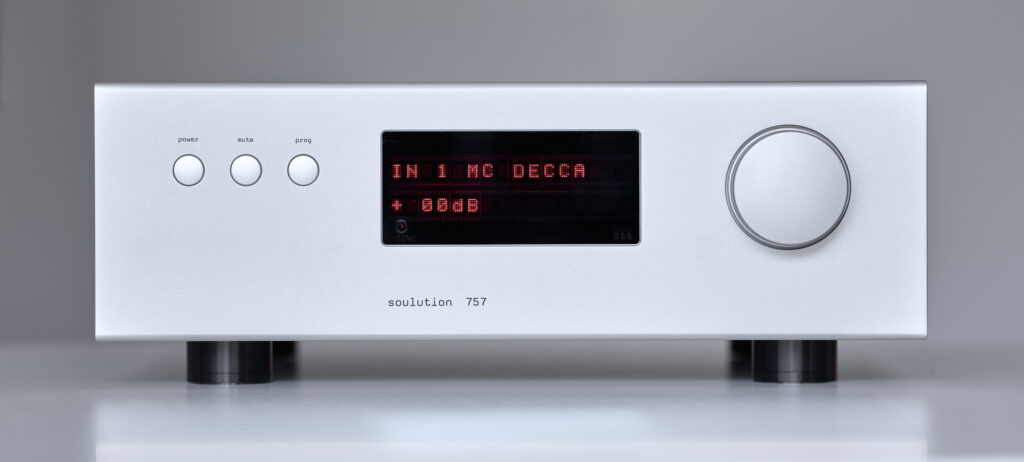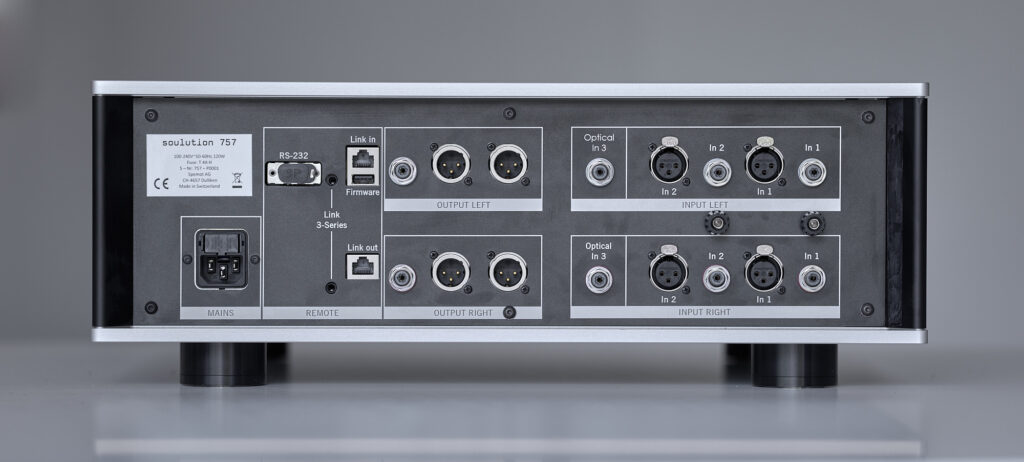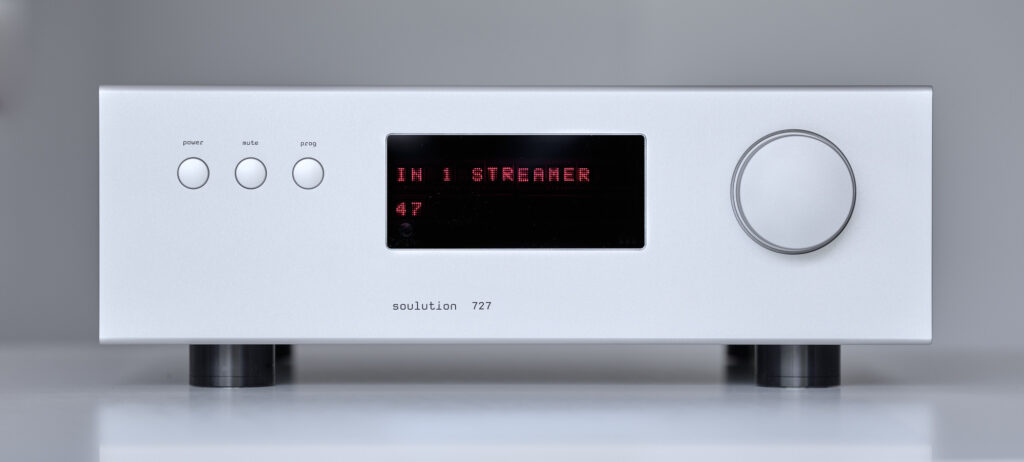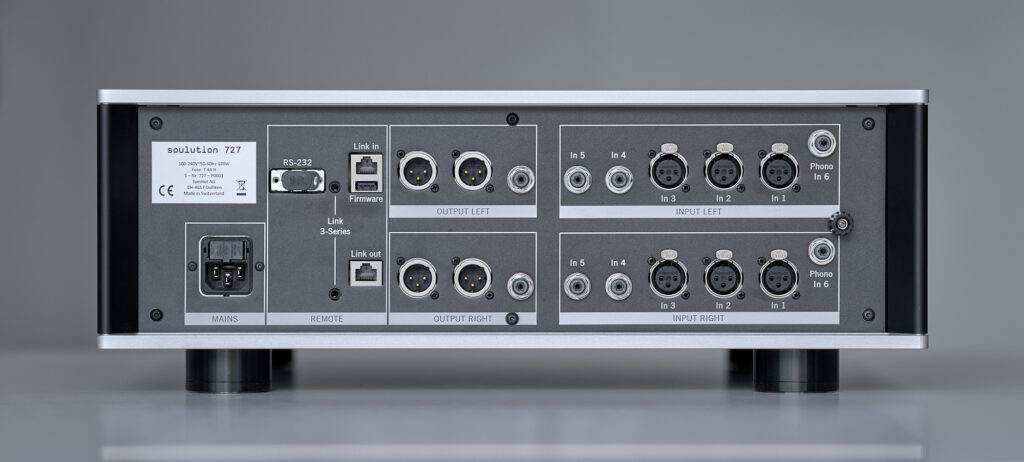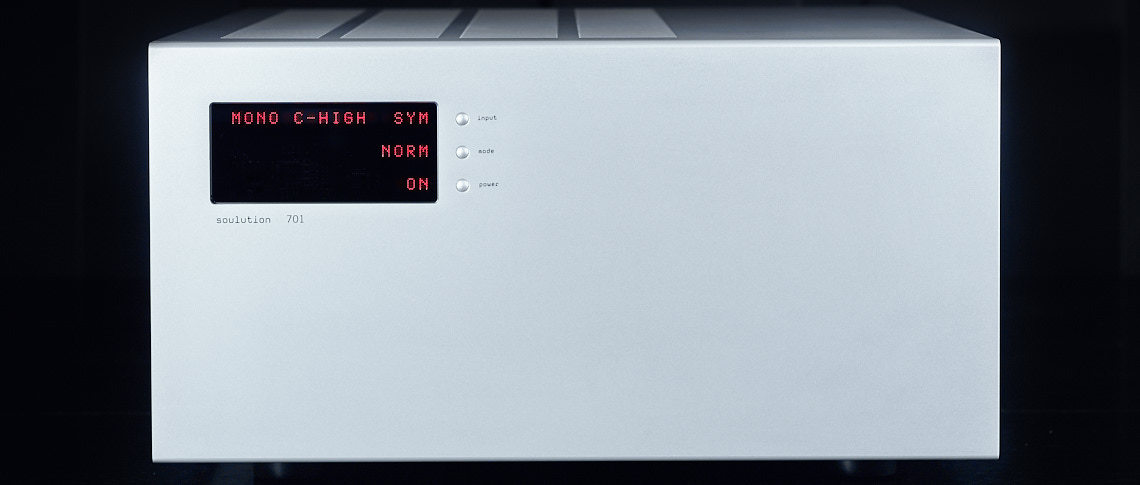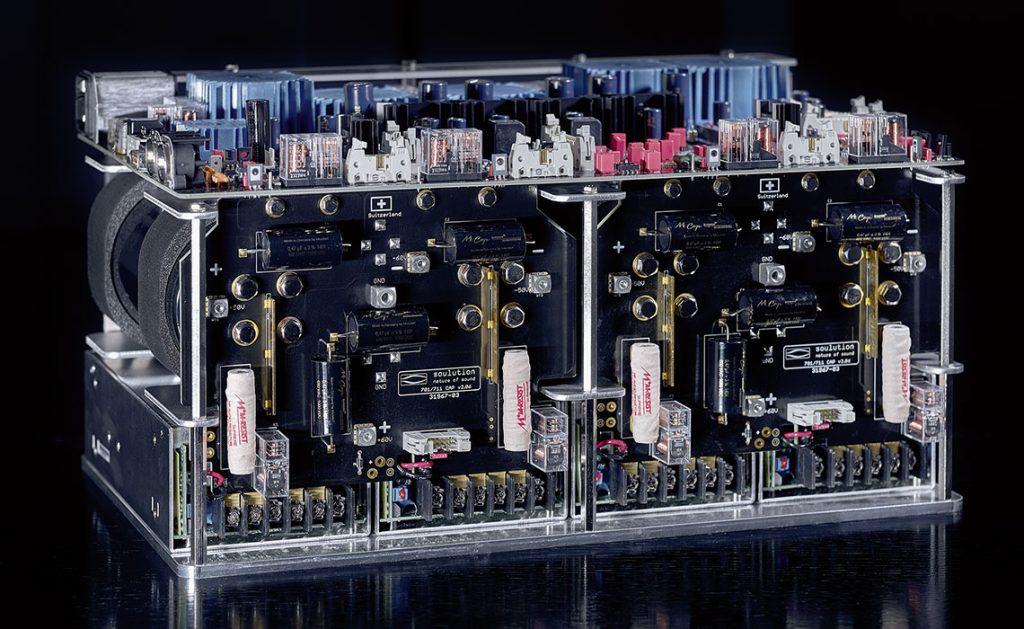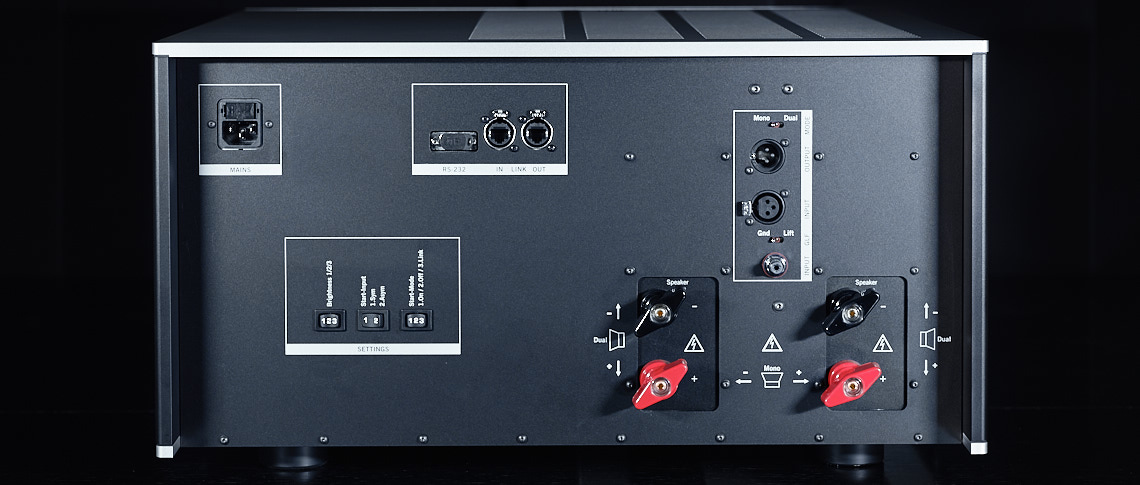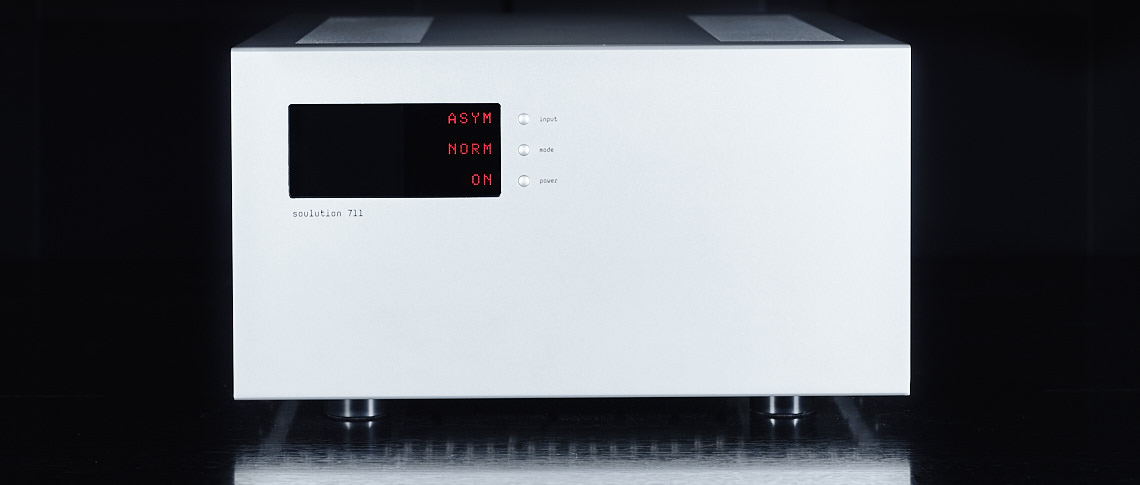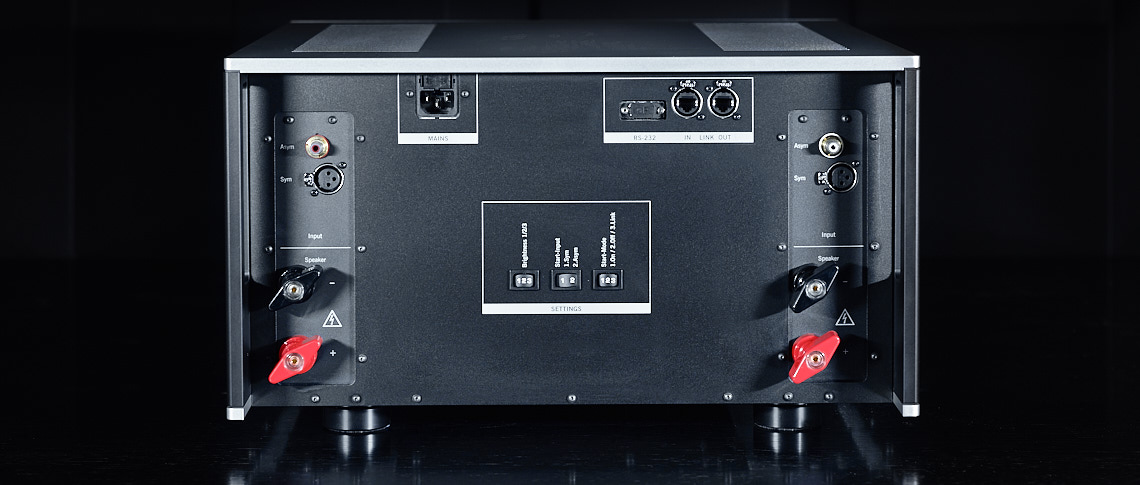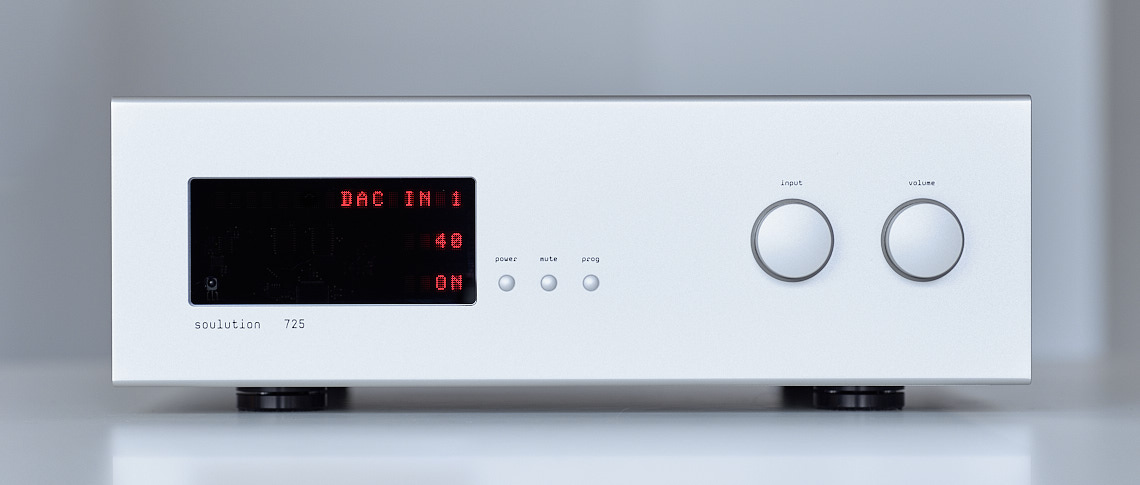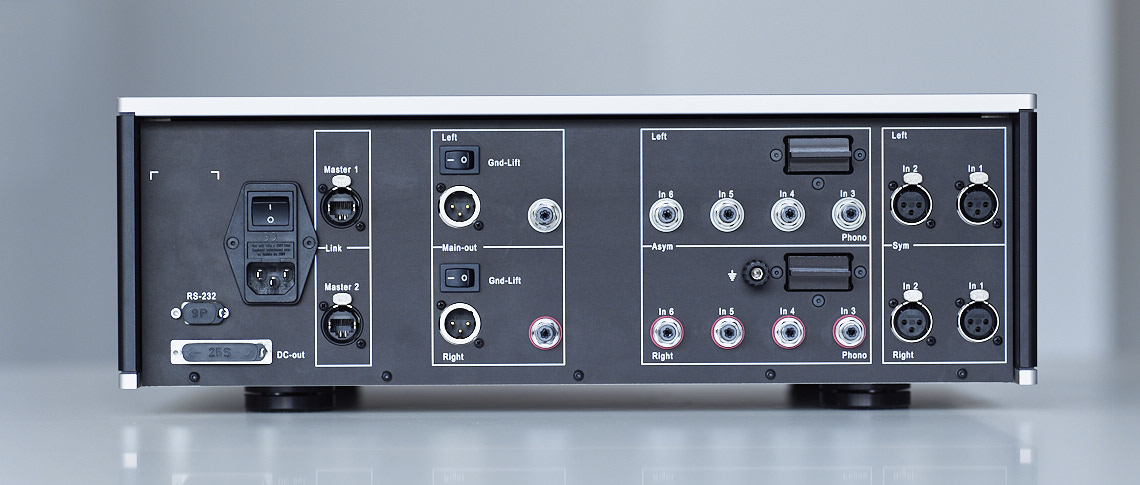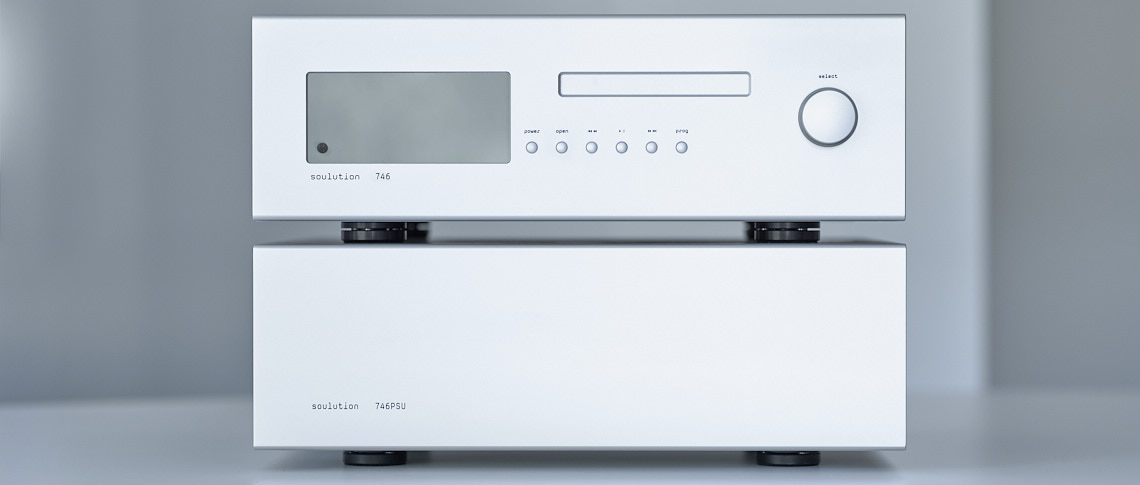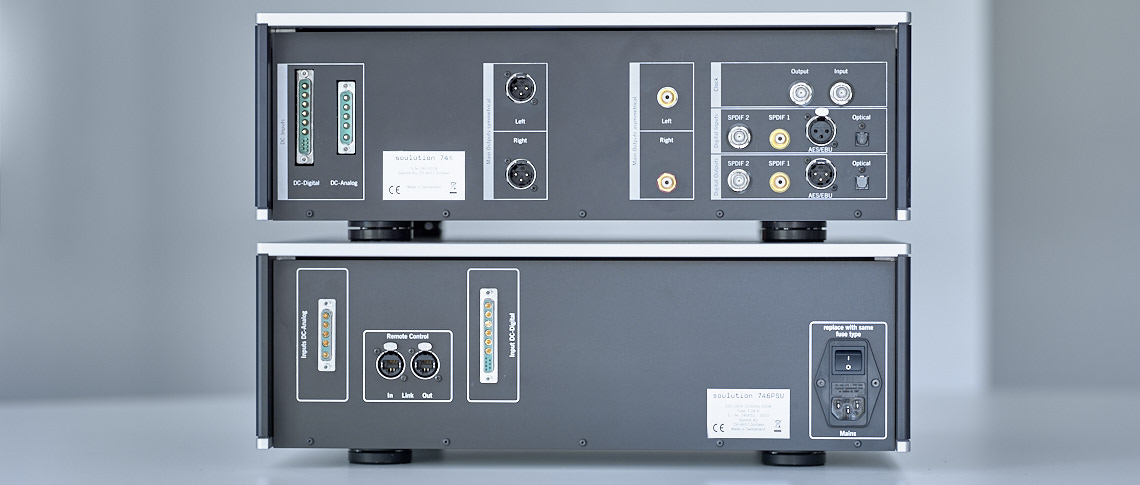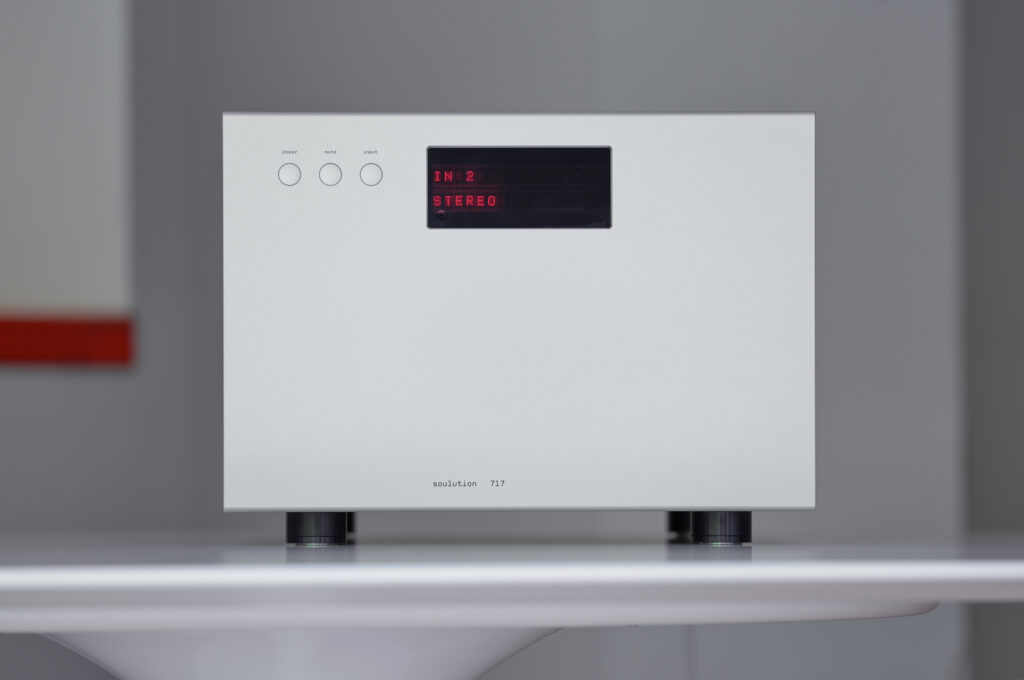
What a difference control makes!
soulution’s new reference power amplifier drives all loudspeakers and sets new benchmarks in terms of noise, phase errors, common mode rejection and distortion.
Key Features
- Switched mode power supply (4 × 600 VA , 4x 2’100 VA peak)
- Impulse current rating of more than 400 Ampere
- Minimal phase change (<0.2° @ 20kHz) in audio band
- Ultra low noise circuit < -165dBV (input related noisedensity)
Highlights
Layout
The 717 power-amplifier (including the power supplies) was designed to be entirely dual-mono in its layout. The left and right channels each have their own PCB and are thus completely separated from each other. This results in much better channel separation (> 130 dB) than with previous models.
Input stage
The innovative input stage of the717 power-amplifier enables exceptional common mode rejection without compromising the input stage by introducing noise. This is achieved with parallelized instrumentation amplifiers designed for wide bandwidth (20MHz), lowest noise and optimal common mode rejection (CMMR >105dB). This ensures that even the faintest musical signals can be properly received by the 717 power-amplifier.
Voltage stage
For all amplifier designs with negative feedback more loopgain is better than a lot, provided that the design remains stable. With its bandwidth of more than 2 MHz, a loopgain of more than 120dB (DC) and its ultra linear feedback network the 717 sets a new benchmark in terms of phase coherence and distortion.
Current stage
The current amplifier stage features 16 power transistors per channel working in Class AB. A smart bias current control circuit measures the instantaneous current of each single transistor and controls its idle current ensuring optimal and identical operating conditions. The 717 combines outstanding micro dynamics with impressive raw power delivery. Short current pulses of 400A and more are readily attainable. For safety reasons the continuous current output is limited to 32Arms per channel.
Power supply
Four ultra-high peak-power switched (2’100W for 5 sec.) mode power supply modules provide the power for the rail voltages of the output stage. The output impedance of the regulated supply remains ultralow over the relevant frequency range which renders big storage capacitors redundant. Distributed local power supplies, with highly efficient DC-DC converters and extremely low-noise and fast linear regulators right next to the sink, power the small signal section of the 717. This ensures lowest noise and shortest signal paths for the small signal section.
Specifications
| Mains | 100– 240 V (50 – 60 Hz) |
| Power consumption | < 0.5 W standby idle 300 W max 1600 W |
| Outputs | 2 pairs Cu-terminal, gold plated |
| Gain | + 26 dB |
| Power output | 2 × 150 W @ 8 Ω 2 × 300 W @ 4 Ω 2 × 600 W @ 2 Ω |
| Pulse power | > 2 × 6000 W |
| Frequency response (– 3 dB) | 0 – 2 MHz |
| Phase response (@20kHz) | < 0.2° |
| THD + N | < 0.001% at 50 W @ 4 Ω (20 Hz – 20 kHz) |
| Signal-to-noise ratio | 108 dB (5 W @ 1 kHz) |
| Spot noise (input related) | < 165 dBV/sqrt(Hz), 20Hz - 20kHz |
| Channel separation | > 120 dB @ 1 kHz |
| Damping factor | > 10 000 |
| Output current max | 32 A (limited) |
| Inputs | 2 × balanced (XLR) |
| Input impedance | 4.4 MΩ balanced |
| Dimensions | 480 × 350 × 505 mm (W × H × D) |
| Weight | approx. 50 kg |
| LINK (remote turn-on) | 12 V control signal |
